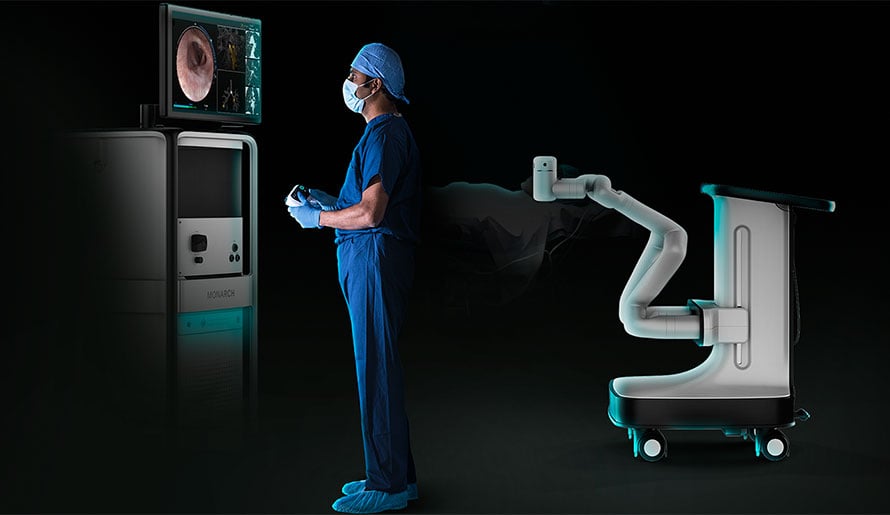
Better Outcomes for Lung Cancer Using Robotic Bronchoscope
This summer, Moffitt's Interventional Pulmonology team celebrated their 100th robotic bronchoscopy case using innovative new endoscopic technology to better diagnose lung cancer. Auris Health’s Monarch platform is cleared by the U.S. Food and Drug Administration for diagnostic and therapeutic bronchoscopy procedures. This new robotic bronchoscopy platform uses what looks like an Xbox videogame controller to navigate the flexible bronchoscope to the periphery of the lung and delivers improved reach, vision, control and accuracy for biopsy of small lung lesions. This technology combines traditional bronchoscopic views into the lung with computer-generated navigation based on 3D models of the patient’s own lung.
Lung cancer is leading cause of cancer deaths worldwide in both men and women, making up almost a quarter of all cancer deaths. That’s more than colon, breast and prostate cancers combined. According to the American Cancer Society, more than 235,000 Americans will be diagnosed with lung cancer this year and 131,000 will succumb to the disease.
Early stage lung cancer patients often have no symptoms, and when it is found, it is often at an advanced stage and has already spread beyond its primary location but this technology shows promise for earlier and more accurate diagnosis of pulmonary nodules in patients at risk for lung cancer and opens the door to deliver direct treatment if necessary.
“We can go down into the airways and the robot allows us to navigate and drive within the lungs,” said Dr. Eduardo Celis, interventional pulmonologist in the Department of Thoracic Oncology at Moffitt. “Imagine this as using a GPS in your car. With the accuracy you can go turn by turn. It’s the same thing inside of the lung.”
If there is a cancer diagnosis, robotic surgery is one of the most promising developments in lung cancer treatment. Moffitt surgeons use the da Vinci system, a minimally invasive alternative to traditional open chest operations.
The surgeon will use small incisions to insert miniaturized surgical instruments, including a high-definition 3D camera, into the area of the lung cancer. The surgical console allows for a magnified 3D view of the surgical field.
“Robotics also benefits the surgeon as it provides a three-dimensional view of the chest,” said Dr. Eric Toloza, a thoracic surgeon at Moffitt. “If you’ve seen 3D movies, there’s a lot more depth of perception than regular 2D movies. It’s the same type of view in robotic surgery.”
The platform allows surgeons to perform entire procedures through several small incisions in a patient’s chest with a level of precision that can’t be replicated without robotic assistance. These surgeries are typically less traumatic to a patient than an open-chest operation and can offer better surgical results.
“We’re not doing surgery with just long sticks,” said Toloza. “We actually have instruments that mimic how our hands and wrists work while the robot also scales the motion. If I were to move an inch, the instruments only move about a quarter of an inch. It makes for more precise dissection and it’s more comfortable for the surgeon, so they can work longer, both during surgery and in their career.”
Early stage lung cancer patients who undergo lung surgery almost always return to a normal life.
If you’d like to refer a patient to Moffitt, complete our online form or contact a physician liaison for assistance. As part of our efforts to shorten referral times as much as possible, online referrals are typically responded to within 24 - 48 hours.
